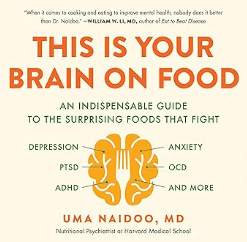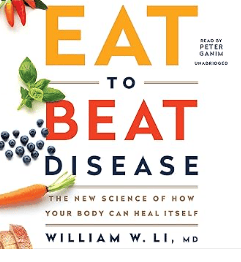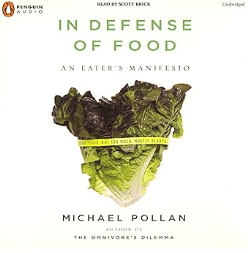Healthy Foods – Healthy Eating Made Simple
Healthy Foods are all around us and Healthy Eating is essential for just about every aspect of our lives. Check out the guides, visuals, and videos to get healthy.
Chapters
Definition of healthy eating: Balancing nutrients, moderation, and variety.
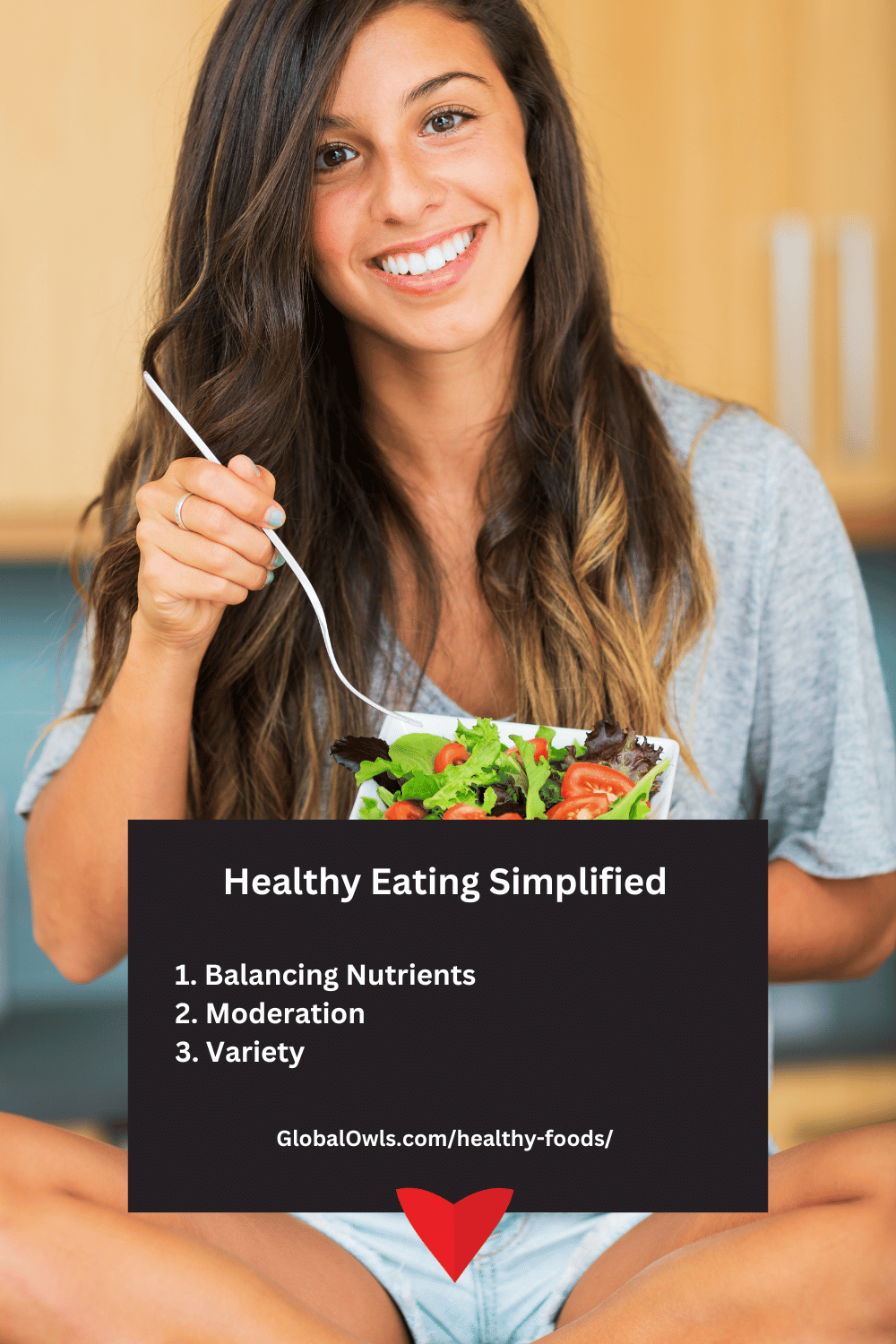
Healthy eating is a comprehensive approach to consuming food that emphasizes balance, moderation, and variety. Here’s a breakdown of these core principles:
1. Balancing Nutrients
- Balanced Diet: A healthy diet ensures that you get the right proportions of macronutrients (carbohydrates, proteins, and fats) and sufficient micronutrients (vitamins and minerals) to meet the body’s needs.
- Nutritional Adequacy: This involves consuming all essential nutrients in required amounts to maintain health, vitality, and overall wellbeing without excess or deficiency.
2. Moderation
- Controlled Portions: Eating in moderation means not consuming too much or too little of any particular type of food. It is crucial for maintaining a healthy weight and preventing diseases related to over- or under-eating.
- Mindful Eating: This refers to being conscious of what and how much you eat, listening to your body’s hunger and fullness cues, and avoiding mindless snacking or emotional eating.
3. Variety
- Diverse Foods: Incorporating a wide range of foods in your diet ensures that you receive a broad spectrum of nutrients. This includes eating different types of fruits, vegetables, grains, proteins, and fats.
- Cultural and Seasonal Selections: Embracing cultural diversity in foods and choosing seasonal and local produce can enhance the nutritional quality of your diet and make eating a more enjoyable and sustainable practice.
By focusing on these key principles, healthy eating supports the body’s functions and promotes optimal health.
Understanding Nutrition Basics
Understanding the basics of nutrition is crucial for making informed dietary choices that support a healthy lifestyle. Here’s a detailed breakdown of the foundational components of nutrition, including credible sources to enhance the accuracy of the information.
Macronutrients

- Carbohydrates: These are the body’s main energy source. They are found in fruits, vegetables, grains, and sugars. Complex carbohydrates like whole grains and vegetables are preferable due to their higher fiber content and slower digestion, which helps control blood sugar levels.
- Proteins: Essential for building and repairing tissues, proteins also play a role in immune function and hormone production. Sources include meat, dairy products, legumes, and nuts. It’s important to balance animal and plant sources for optimal health.
- Fats: Vital for brain health, energy, and cell structure, fats come in saturated, unsaturated, and trans fats forms. Unsaturated fats (found in olive oil, avocados, and fish) are considered beneficial for heart health, while trans fats are generally harmful and should be avoided.
Micronutrients
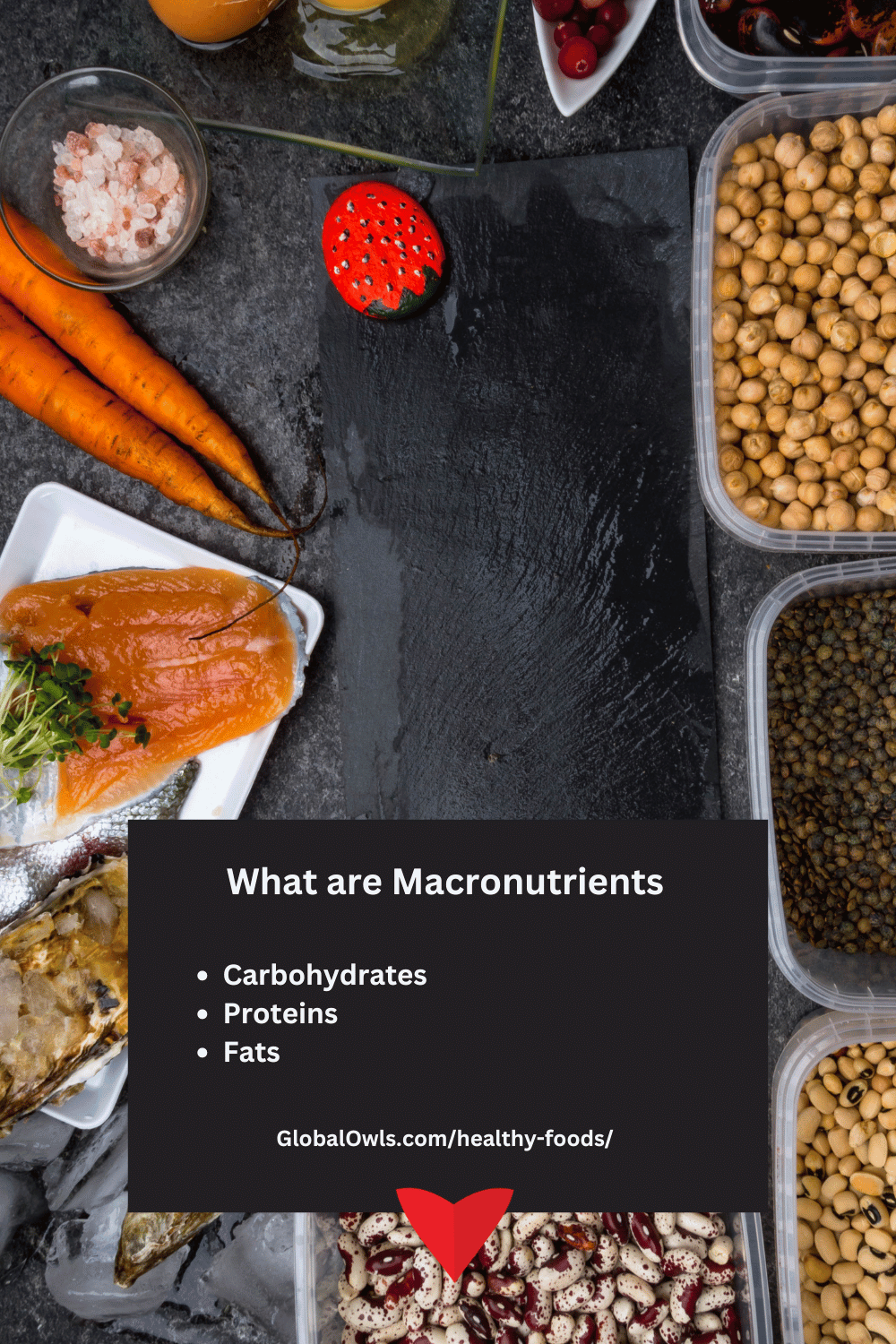
- Vitamins: Organic compounds required in small quantities for vital bodily functions. For example, Vitamin C is important for the immune system and skin health, while Vitamin D is crucial for bone health and immune function.
- Minerals: Inorganic elements like iron (important for blood health) and calcium (essential for bone health) are critical for various physiological functions. Trace minerals like zinc and selenium are also important for overall health.
Credible Sources for Further Reading:
Academy of Nutrition and Dietetics (www.eatright.org): Provides evidence-based food and nutrition information.
World Health Organization (WHO) (www.who.int): Offers global guidelines on daily nutrient intakes and detailed reports on micronutrients.
National Institutes of Health (NIH) (www.nih.gov): A valuable resource for in-depth research articles and public health information regarding all nutrients.
Harvard School of Public Health (www.hsph.harvard.edu): Publishes resources on nutrition sourced from ongoing research and studies in public health.
Top Healthy Audio Books
Learn more from the pros. Get your 30-day free Audible Trial and listen to books about nutrition and healthy foods for free. Here’s a lineup of top healthy food audio books you could be listening to within a couple of minutes.
Practical Eating Tips
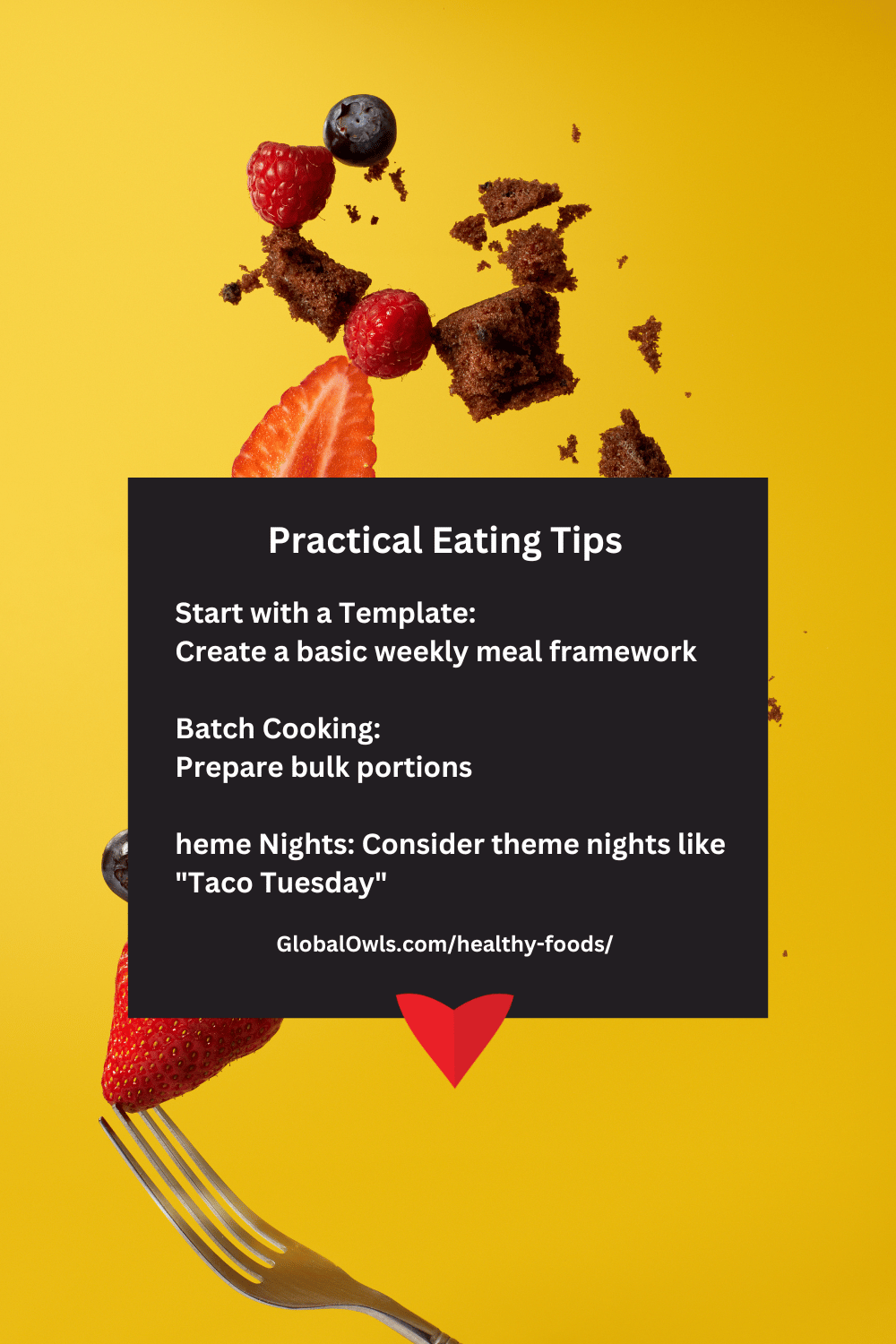
Practical eating tips can make healthy eating more manageable, especially for busy individuals. Below, you’ll find strategies and advice on meal planning, preparing quick and healthy meals, smart snacking, and understanding food labels, all sourced from credible experts and institutions.
Meal Planning and Prep for Busy People
How to Plan a Week’s Menu
- Start with a Template: Create a basic weekly meal framework that varies protein sources and includes a range of vegetables and grains.
- Batch Cooking: Prepare bulk portions of staples like proteins, rice, or vegetables at the start of the week. Harvard Health Publishing recommends this for efficiency and to ease daily cooking stress.
- Theme Nights: Consider theme nights like “Meatless Monday” or “Taco Tuesday” to simplify decision-making and add variety.
Quick and Healthy Recipes
- Sheet Pan Dinners: Toss a protein and a variety of vegetables on a pan with some olive oil and seasonings, and roast for a no-fuss, nutritious dinner.
- One-Pot Meals: Dishes like soups, stews, or pasta can be made in one pot for minimal cleanup and maximum nutrient retention, suggests Mayo Clinic.
- Pre-cut Vegetables: Use pre-cut veggies to save time, adding them to stir-fries or wraps for a quick meal.
Healthy Snacking Ideas
Nutritious Snack Options for Work and Home
- Yogurt and Berries: A high-protein yogurt with a handful of berries offers a good mix of protein, fiber, and antioxidants.
- Nuts and Seeds: A small portion provides a satisfying crunch and a boost of healthy fats.
- Vegetable Sticks and Hummus: A snack rich in fiber and protein can keep you full between meals.
Avoiding Common Snacking Pitfalls
- Mindful Eating: Avoid eating directly from the package; instead, portion out snacks to avoid overeating.
- Balanced Choices: Combine macronutrients, like pairing apple slices with almond butter, to improve satiety and energy levels.
Reading and Understanding Food Labels
How to Spot Hidden Sugars and Fats
- Ingredient List: Sugars may appear under names like sucrose, fructose, corn syrup, and more. Fats might be listed as hydrogenated oils or shortening.
- Check the Serving Size: Labels are often based on smaller serving sizes than what people typically eat. Adjust your calculations accordingly.
Understanding Nutritional Information Panels
- Percent Daily Values (%DV): These help you gauge the portion of daily intake requirements met by the product. According to the FDA, 5% DV or less of a nutrient per serving is considered low, while 20% DV or more is high.
- Look for Fiber, Vitamins, and Minerals: Choose foods rich in fiber, vitamins, and minerals compared to those heavy in fats and sugars.
Credible Sources for Further Reading
- Academy of Nutrition and Dietetics (www.eatright.org): Offers practical advice on meal planning and understanding food labels.
- Mayo Clinic (www.mayoclinic.org): Provides tips on healthy cooking and snacking.
- U.S. Food and Drug Administration (FDA) (www.fda.gov): Details on how to accurately read food labels and understand nutritional content.
By integrating these practical eating tips into your daily routine, you can maintain a balanced diet, save time, and enhance your overall health. Eating healthy foods does not need to be difficult.
Healthy Foods YouTube Playlist
Check out our Healthy Foods YouTube Playlist where we share engaging videos to help simplify eating healthy foods. Subscribe to our channel and stay inspired.
Here are some video examples on healthy foods:
Conclusion
Eating healthy foods does not need to be difficult. Be sure to check out the free resources we’ve provided and set up a plan. Without a plan of which healthy foods to eat and when, it’s difficult to keep track and improve your health.


